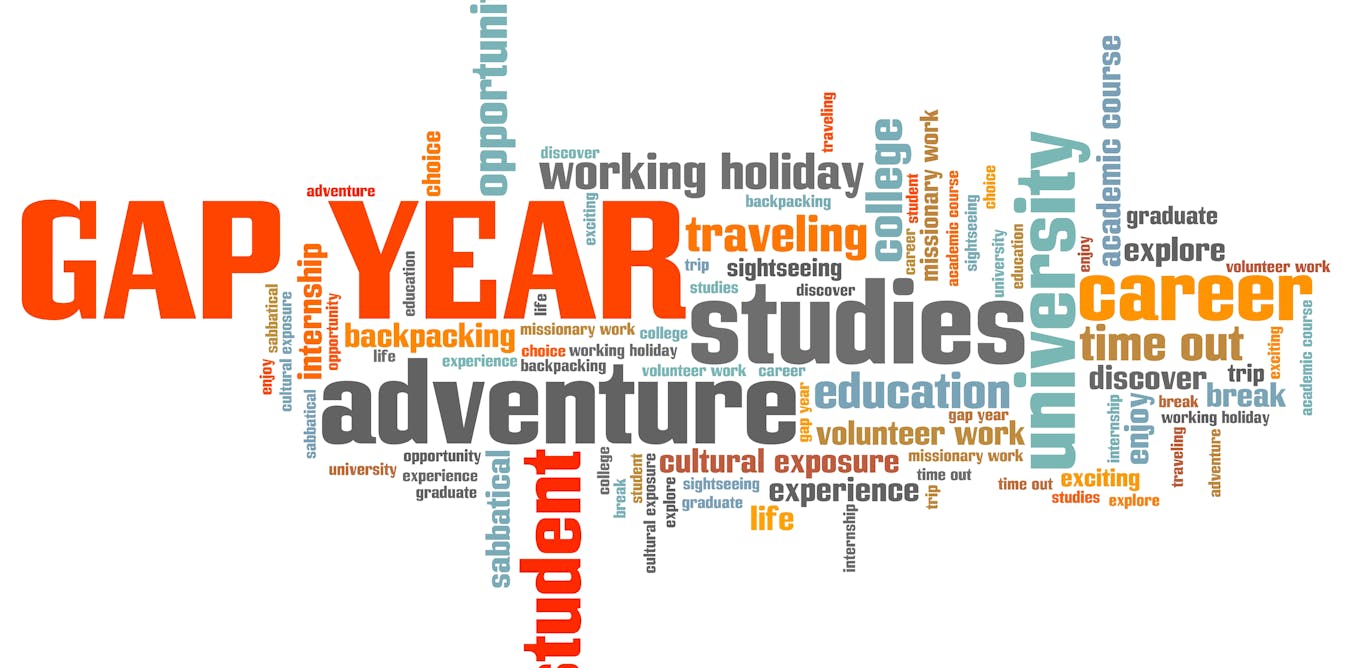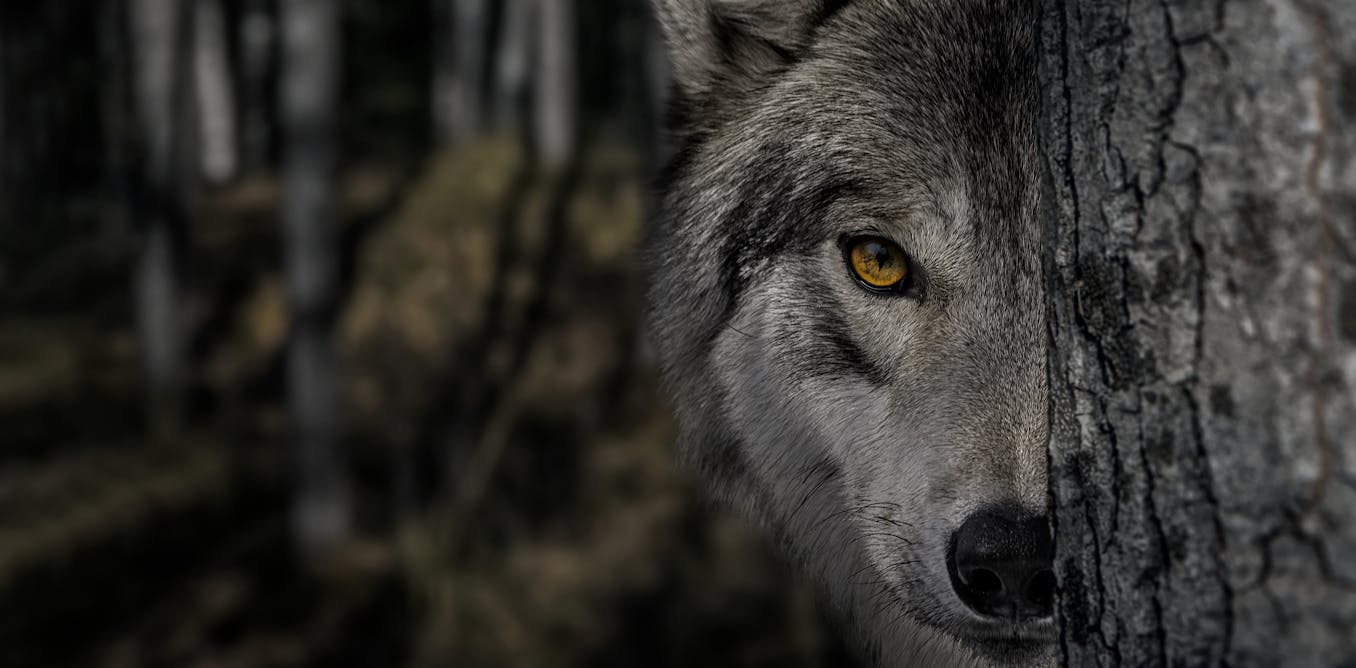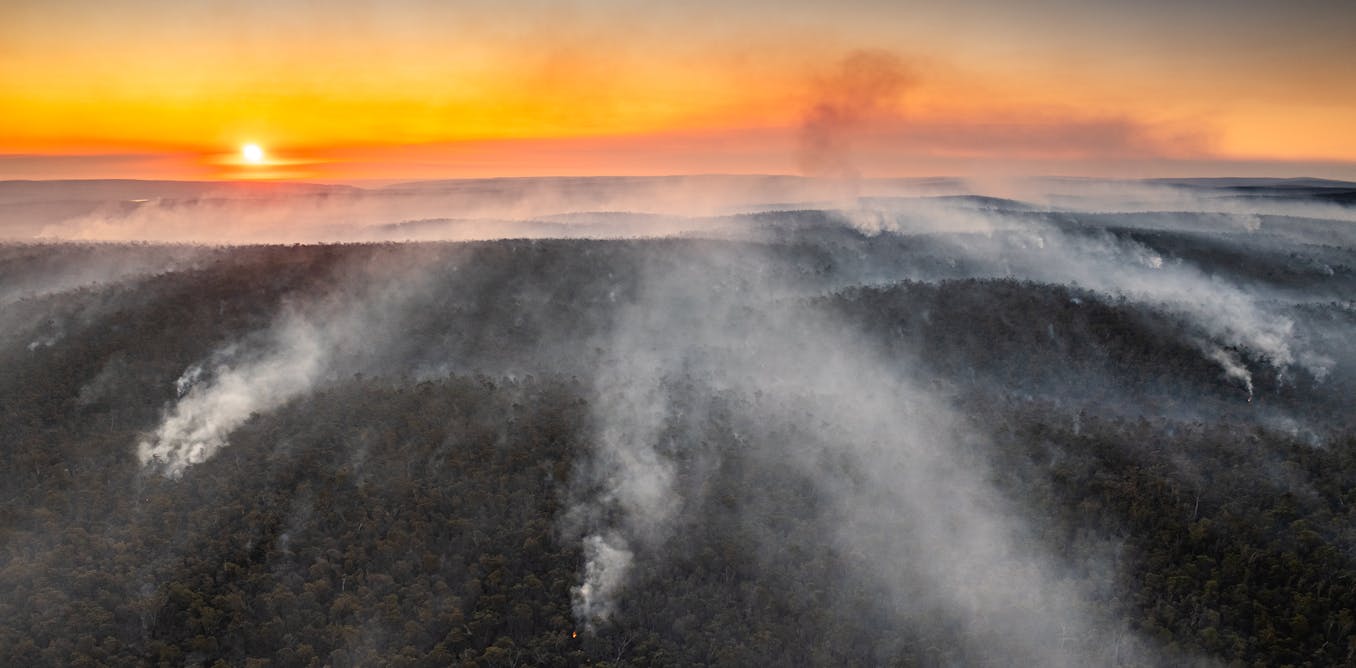Since the birth of modern cosmology in the 1920s, we’ve been bombarded with discoveries so staggering they border on the surreal. There are more than 2 trillion galaxies in the observable Universe. The gold in our jewelry was forged in the cataclysmic collision of neutron stars. We can now detect the faint afterglow of light emitted when the Universe was just 380,000 years old. Ninety-five percent of the cosmos — dark matter and dark energy — remains an open riddle. And the atoms in our bodies were once inside stars that died in spectacular explosions.
These aren’t just astronomical facts — they are fragments of our own story. And yet, the cosmos stays strangely “over there,” like a brilliant mural we’re not sure how to enter. These revelations strike us with intellectual awe, but remain oddly weightless, precisely because they are too inconceivable to hold. What, after all, can a single human mind do in the face of such scales?
Yet a growing number of cosmologists and astrophysicists stare at the same data and begin to see the mural itself. Not a cold inventory of matter and laws, but a dynamic, unfolding narrative — a cosmos in process. What emerges is not just a chain of events, but a developmental arc rich with interiority.
In this story, humans are not incidental bystanders but participants in a sweeping evolutionary drama. It begins 13.8 billion years ago and arrives, improbably, on a small rocky planet in a quiet galactic suburb, where stellar remnants arranged themselves into life — then into minds capable of awe and inquiry. Telescopes, satellites, and equations became the instruments of those minds. And through us, the Universe crossed a threshold: It began, for the first time, to contemplate itself.
But this doesn’t end here, not even with this remarkable cosmic achievement. After a long, dizzying hangover from the Copernican revolution, which cast humanity from the center of the Universe into a vast wilderness of exile and homelessness, some cosmologists and astrophysicists now believe the Universe speaks to us. Not just through awe-striking facts and elegant explanations, but through a meaningful, transformative story. A story that, if we learn to listen, could reshape human identity, experience, meaning, and ethics.
Some even suggest it may offer the key to humanity’s next evolutionary step. A few go further still: They envision a new, science-based wisdom tradition — one that moves beyond the old divide between a science that tells us how things work and a religion that tells us why they matter. A path where insight and meaning might finally converge.
Whether the unfolding story of the Universe could one day become a fact-based, non-dogmatic path of wisdom is still a bold — perhaps premature — question. For anything to shape and transform human lives as religion or ancient philosophy once did, it must offer more than knowledge. It needs a tale of origin, belonging, and purpose; a vision of the human ideal; a compass for how to live, love, suffer, and die; practices that deepen the inner life; and moments of encounter with what transcends us.
Yet the five cosmologists and astrophysicists interviewed by Big Think — Alan Lightman, Marcelo Gleiser, Nahum Arav, Brian Swimme, and Joel Primack (with his co-author, philosopher Nancy Ellen Abrams) — gesture toward how, for some, peering into the vast reaches of scientific discovery might begin to stir the outlines of such a path. In their own ways, they speak of a new kind of intimate, almost sacred experience opened by the cosmic view; of a meaning drawn not from myth but from matter; of ethics born from our entanglement with all life — and of a science that, one day, may ripen into wisdom.
The stars are our ancestors
Wisdom traditions have long turned to the cosmos for orientation. The Stoics, for instance, practiced star-gazing and inner visualizations to dissolve the self into the whole — to inhabit a view from above where human affairs shrink into proportion. In his Meditations, Marcus Aurelius urges us to see the Universe as one living being, with a single soul, and to “run alongside the stars,” allowing their silent courses to cleanse us of the dust and turmoil clinging to life on the ground.
A more provocative question is whether modern cosmology might deepen our felt communion with the Universe, and even offer new forms of mind-altering experience. Brian Swimme, professor at the California Institute of Integral Studies, has developed meditative practices grounded in evolutionary cosmology. One of the most striking appears in his book The Hidden Heart of the Cosmos.
To enter the new story of the expanding Universe, he suggests we begin by altering our habitual orientation. Lie on your back in an open space at night, beneath the Milky Way. Then, imaginatively free yourself from 70 million years of upright perspective. Picture the Earth floating in space — but this time, place yourself on the bottom side of the globe. Now gaze down into the sky. The stars are not above you. They are far, far below. And yet, you do not fall. Suspended by Earth’s gravity, you hover in the galactic deep. In that moment of reversal, you cease to be a human looking out at the stars — and become, for a moment, the Milky Way reflecting on itself from within.
“There are deep experiences one can have within this cosmological framework that amount to revelation,” Brian Swimme tells Big Think. “What’s revealed is a new way of being human. A new way of being Brian. These experiences are so powerful you realize — that just changed my life.” For 50 years, he says, the time-developmental nature of the Universe has kept blowing his mind. “Sometimes my mind can rest in the facts of cosmology, and then suddenly I’ll see from a different angle — and the awe comes rushing in again.”
Swimme lives this awe. Take stellar nucleosynthesis: the discovery that our atoms were forged in ancient stars. “We have to take that in,” he says. “The stars aren’t ‘out there’ — they’re something like mothers. They made us.” When we look at the night sky, we’re not just perceiving distant lights — we’re watching the process that built our bodies, our nervous systems, and the very consciousness now reflecting on them. The stars made our minds, and now our minds look back. “The Universe has turned back on itself,” Swimme says. “When we gaze at the stars, we’re looking at the process that is looking.”
He recalls a childhood moment that would take on deeper meaning years later: standing on a beach, peering into the eye of a dead fish. At the time, he was simply a curious boy, wondering how the eye connected to the brain. But decades later, as a scientist studying evolution, the memory returned — this time, charged with revelation. He realized the brain he was using to study the fish had itself evolved from fish. “I wasn’t looking at a separate creature. I was looking at something that had given birth to me.” In that instant, the boundary between subject and object dissolved. The dualism was gone.
Restoring the emotional core of science
Swimme is not alone in experiencing a direct, awe-filled connection between cosmological discovery and inner life. Astrophysicist Nahum Arav recalls a moment etched in memory: At 14, fresh from an amateur astronomy course, he stepped into his parents’ backyard with a star map in hand. “I started identifying these stars and these constellations,” he tells Big Think. “This was one of the most spiritual experiences in my life because I felt so connected to the Universe around me.”
That sense of intimacy didn’t fade — it deepened as his scientific understanding grew. “For me, the more I understand the details, the more I’m fascinated, and the more I’m at awe to the beauty and magic of nature — even if it sounds paradoxical, because I do it very rationally, scientifically, and empirically based.” Like Swimme, he often reflects on the cosmic origin of our bodies: “All of the elements we are made of were produced in the crucible of very massive stars.” For Arav, that fact alone is spiritual. “I feel one with the Universe… I consider the stars and constellations my friends in the sky.”
Physicists Alan Lightman and Joel Primack echo similar sentiments. In Searching for Stars on an Island in Maine, Lightman recalls a summer night alone in a small boat, lying back under a sky ablaze with stars. In that stillness, he felt his sense of self dissolve — a “cosmic merging event,” as he calls it. “A grand and eternal unity, a hint of something absolute and immaterial.” Though he doubts scientific facts can directly induce such states, he believes they can inspire them. “An understanding of the scientific and material basis for sunsets, lightning, and the rings of Saturn,” he says, “only enhances my awe.” Primack, co-developer of the Cold Dark Matter model, speaks of a different kind of transcendence: the awe that comes when a complex calculation turns out to be true. “You feel,” he says, “as if God is speaking to you.” Such moments, for him, are “as fulfilling, satisfying, profound, and transformative as a religious experience.”
But what about those of us who can’t hear God in the click of equations? Physicist Joel Primack and his co-author Nancy Ellen Abrams believe awe can still be made accessible — through art, symbolism, and guided meditations, which they offer in The View from the Center of the Universe. Swimme also believes such breakthroughs are possible, but only with practices that engage imagination, contemplation, and deep remembrance — much like the inner disciplines cultivated in monasteries or ancient Chinese schools of thought. “We need to invent educational processes that evoke a new kind of human being,” he says. For him, cosmological awareness is a kind of modern rosary: a meditation on fish, stars, and the brain reflecting back on them.
Physicist Marcelo Gleiser agrees, but stresses that everything depends on how the story is told. “Reason is the tool, not the inspiration,” he says. “The mystical connection has inspired scientists for centuries — but modern science often strips out that emotional core.” To restore it, we must go beyond the cerebral. “I’d suggest cosmos bathing,” he says. “A deep exposure to the night sky — not just learning what is what, but communing with the vastness — can open doors of perception. I’ve guided many such encounters. It works.”
A narrative based on belonging
But awe alone doesn’t carry us far. Can the immense data of cosmology form a story vivid enough to reshape how we see ourselves, where we find meaning, and how we live? In The Dawn of a Mindful Universe, Marcelo Gleiser suggests the facts are already in place; what’s missing is the imaginative frame. “The same story,” he says, “can be told in many different ways.” What’s needed is to stop stripping the scientific narrative of its emotional undertow — to preserve its rigor, yes, but to welcome back the sense of wonder it once carried. Then something long buried begins to shine through. “The modern cosmological story tells us that there is no separation between us and the world, or even between us and the cosmos at large.” The shift is radical. We move beyond the Western script of dominion — “we own nature” — into a narrative of belonging, from the Big Bang to the living thread of Earthly life.
Beyond restoring the long-lost feeling of enchantment, what these five scientists — and others like them — seem to be doing is taking the dry facts, dazzling as they are, and following them to their ultimate conclusion. “Millions of humans devoted themselves to this hard work of tracking things in terms of empirical knowledge,” says Brian Swimme, “and so we have amazing data now about the Universe.” But at some point, he insists, we must harvest from this vast record its philosophical, ethical, and personal meaning — to reach “understanding that goes beyond just the data.”
That, he says, is when the Universe begins to speak. “We’ve come out of that process and, through ever-deepening complexity, arrived at the ability to understand how it all took place. The Universe, in the form of humans, is now understanding its infancy, its adolescence, and its later stages. We are the place where the whole sequence has become aware of itself.”
“We really need to make use of this empirical knowledge and understand how it can help us in our own lives. How do we grow from it?” asks philosopher of science Nancy Ellen Abrams, speaking with her co-author Joel Primack. “It’s just like with medicine — we don’t make the discoveries, but we get the benefit when we’re sick.” A few thousand people, she notes, have learned to think about the Universe as a whole, based on evidence, not myth. “What people can do with this is reevaluate what we are as human beings.”
That begins, they suggest, with embracing the scale of billions of years — not just as backdrop, but as the substance of our very identity. “We are not a package of organs inside skin,” Abrams says. “We are an embodiment of the history of the Universe, literally history embodied in an incredibly emergent phenomenon here.” Seen this way, our lives gain meaning from deep time.
Then comes a second, profound implication — one that Primack and Abrams believe may be cosmology’s greatest gift. For tens of thousands of years, every culture had a shared story of the Universe. “It gave them a bonding with everyone else in their tribe,” Abrams says, “that ‘we’ share this story.” But since the 17th century, science and religion went their separate ways — and our collective picture shattered. “Every religion has its own picture,” she notes. “It’s one reason there’s so much conflict.” Now, for the first time, cosmology offers a story of human origins that is evidence-based and universally true. “We have the same story.” If we could agree on that scale, they believe, we might finally build unity on shared cosmic ground.
Not resources, but relatives
Another message rising from astronomy’s quiet data is that we might be the first intelligence of our kind in the galaxy. “We could be the seeds of intelligence in the galaxy,” says Nancy Ellen Abrams. “We are actually the brain of the Earth. We’re the only ones who can think about this, and we’re the only ones who have any data to base it on.” There may be aliens, or there may not — but we must act as if we are the first. “We really should think of humanity as the hottest startup ever. We have an obligation to the Universe to keep going. Humanity is the self-consciousness of the cosmos. Understanding this would give people a much better sense of why we need to protect our species.”
All the discussants agree: Though we’ve been cast out of our old cosmic throne, the staggering rarity of life — and of conscious beings like us — pushes us toward a new ethic of Earthly belonging. Alan Lightman traces the arc. Our atoms were born in stars, he notes, which means “we are all connected in a profound way; we all came from the same place — not only us on Earth, but all living things throughout the cosmos.” And life itself? “Less than one billionth of one billionth” of the Universe’s matter — “like one grain of sand on the Gobi desert.” Such rarity reshapes how we see ourselves. “We living things of high intelligence,” he adds, “are the only way the Universe can observe itself and comment on itself.” That brings, he says, “a moral and spiritual obligation.” Marcelo Gleiser calls it biocentrism: an ethic that re-sacralizes Earth, centers all life, and reconnects us with the truth native wisdom always knew — kill nature, and we die too.
Swimme wholeheartedly affirms this biocentric turn. “The universe’s new story,” he says, “is a powerful way out of the dualism that is causing us so much sorrow and anguish.” In modern industrial thinking, the Earth is reduced to a gravel pit, a hardware store of “resources.” But that worldview is cracking. What’s emerging instead is a deeper recognition. “These aren’t resources,” Swimme insists. “They’re all relatives.” From that perspective, reverence replaces extraction. “It’s very difficult to be cruel to another living creature once you know it took 14 billion years to bring this about.”
Abrams draws a political lesson from cosmology’s vast timeline: If we can grasp a Universe billions of years old, we can also begin to care about the far future. That caring, she says, must now become planetary. “This is the first time that it’s been actually possible to think cosmically and act globally. Not even religion on Earth teaches us how to do that. But that’s what we need now.”
A new path to wisdom
This raises a daring question: Could the Universe’s unfolding story — told with feeling and followed to its depths — offer something as soul-shaping as religion does, or once did? Not a new creed or a NASA-built cathedral, but a shared framework of meaning rooted in evidence: a way to live with reverence, belonging, and cosmic purpose.
Surprisingly, Swimme, Arav, Gleiser, and Primack don’t shy away. Swimme believes science itself is at a turning point. “The old dualism is breaking down,” he says. “It’s no longer a viable way of understanding things.” From Pythagoras’s mathematical science to Newton’s mechanistic model, each era redefined our worldview. Now, Swimme envisions science evolving into a “wisdom form” — not to replace religion, but to enrich it. Earlier cultures, he notes, glimpsed these truths spiritually; science now arrives at them empirically. “There’s a real synergy,” he says. “This new cosmological science won’t erase religion — but it may help shape a new way of being human.”
For Nahum Arav, science isn’t stealing spirituality’s thunder — it’s reinventing it. Rooted in our evolutionary kinship with the cosmos, this new form of wonder doesn’t lean on divine scripts or afterlives, but on something even more astonishing: the real story. Traditional religions, he says, offered a Darwinian advantage. They gave our ancestors comfort, certainty, and a reason to carry on. “But in the last 500 years,” Arav notes, “we’ve gained a rational framework to understand the Universe — and for me, that framework is deeply spiritual.”
Science evolves, he admits, which can make it feel less grounding. Yet the saga it tells — the 13.8-billion-year journey from stardust to self-awareness — is, for him, “far richer and more fascinating than anything we ever imagined.” He’s not alone. “A significant fraction of scientists,” Arav observes, “find that science itself now fulfills their spiritual needs.” Perhaps, in this age of evidence, meaning is finally being reborn from fact.
This article 5 scientists on finding meaning in our Universe’s 13.8-billion-year story is featured on Big Think.

The post “5 scientists on finding meaning in our Universe’s 13.8-billion-year story” by Shai Tubali was published on 06/02/2025 by bigthink.com





































Leave a Reply